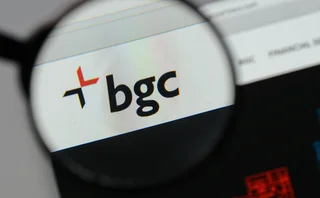
LCR rollback puts onus on liquidity stress tests
Risk USA: Stress tests may attract more scrutiny if LCR and NSFR are scaled back

Internal liquidity stress tests may attract more scrutiny if US regulators move ahead with a plan to ease liquidity and funding requirements for smaller banks.
On October 31, the US Federal Reserve unveiled a proposal that would exempt domestic banks with between $100 billion and $250 billion from the liquidity coverage ratio (LCR) and net stable funding ratio (NSFR). Meanwhile, US banks with $250 billion to $700 billion in assets would see their LCR and NSFR requirements cut to a level between 70% and 85%.
These firms will still be required to conduct internal stress tests, which may take on greater importance in determining appropriate liquidity levels.
“They’re putting a lot more emphasis on internal liquidity stress-testing,” said Alexander Craig, head of US liquidity and structured interest rate risk oversight at RBC. “Outside of the regimen of the LCR and NSFR, the internal stress tests require you to think about your business and the risks you need to solve for.”
US banks are also required to conduct regular, independent reviews of their liquidity risk management processes, including stress-testing practices and assumptions. Those reviews could also come under closer scrutiny.
“As they roll back the intensive review of LCR compliance, will there be additional focus from the regulators on internal liquidity stress-testing?” Craig wondered. “Will there be more pressure on us to make sure we are watching them?”
Craig was speaking on a panel at the Risk USA conference in New York on November 9.
The LCR requires banks to hold sufficient high-quality liquid assets (HQLAs) – such as short-term government debt – that can be sold to meet outflows in a 30-day stress scenario. Banks must also hold enough stable funding to cover the duration of their long-term assets to comply with the NSFR.
The Fed estimates that a 70% LCR will allow US banks with less than $700 billion to reduce HQLAs by around $77 billion.
Eliminating the LCR and NSFR will trim paperwork and reporting requirements for smaller banks, but risk management standards are unlikely to change much.
“We would be happy with lesser regulations but our risk management processes aren’t going to change,” said Vineet Gumasta, regional head of balance sheet risk at Rabobank, speaking on the same panel. “We may not need to file certain things or we may not need to provide certain things to the risk committee on a periodic basis. [But our] processes are here to stay. We are not going to roll back.”
Fellow panellist Steven Hageman, senior treasury and risk management executive at Societe Generale, agreed. “The fundamental rules won’t change,” he said. “It may reduce the number of reports we do, but we still need to do stress-testing. We still need to understand risk and systematically review that risk.”
The Fed is expected to issue a proposal on regulations for foreign banks in the near future, although it is not clear whether these will provide the same relief as for US banks.
Only users who have a paid subscription or are part of a corporate subscription are able to print or copy content.
To access these options, along with all other subscription benefits, please contact info@risk.net or view our subscription options here: http://subscriptions.risk.net/subscribe
You are currently unable to print this content. Please contact info@risk.net to find out more.
You are currently unable to copy this content. Please contact info@risk.net to find out more.
Copyright Infopro Digital Limited. All rights reserved.
You may share this content using our article tools. Printing this content is for the sole use of the Authorised User (named subscriber), as outlined in our terms and conditions - https://www.infopro-insight.com/terms-conditions/insight-subscriptions/
If you would like to purchase additional rights please email info@risk.net
Copyright Infopro Digital Limited. All rights reserved.
You may share this content using our article tools. Copying this content is for the sole use of the Authorised User (named subscriber), as outlined in our terms and conditions - https://www.infopro-insight.com/terms-conditions/insight-subscriptions/
If you would like to purchase additional rights please email info@risk.net
More on Risk management
How Ally found the key to GenAI at the bottom of a teacup
Risk-and-tech chemistry – plus Microsoft’s flexibility – has seen US lender leap from experiments to execution
Industry urges focus on initial margin instead of intraday VM
CPMI-Iosco says scheduled variation margin is better than ad hoc calls by clearing houses
Consortium backs BGC’s effort to challenge CME
Banks and market-makers – including BofA, Citi, Goldman, Jump and Tower – will have a 26% stake in FMX
Revealed: the three EU banks applying for IMA approval
BNP Paribas, Deutsche Bank and Intesa Sanpaolo ask ECB to use internal models for FRTB
FICC takes flak over Treasury clearing proposal
Latest plans would still allow members to bundle clearing and execution – and would fail to boost clearing capacity, critics say
Buy side would welcome more guidance on managing margin calls
FSB report calls for regulators to review existing standards for non-bank liquidity management
Japanese megabanks shun internal models as FRTB bites
Isda AGM: All in-scope banks opt for standardised approach to market risk; Nomura eyes IMA in 2025
Benchmark switch leaves hedging headache for Philippine banks
If interest rates are cut before new benchmark docs are ready, banks face possible NII squeeze
Most read
- Revealed: the three EU banks applying for IMA approval
- Top 10 operational risks for 2024
- Industry urges focus on initial margin instead of intraday VM







